 Outside the Fresh & Easy Neighborhood Market in Eagle Rock, 60 labor activists and grocery store employees lined up on the sidewalk to rally today against unsafe working conditions and alleged union-breaking tactics at the store.
Outside the Fresh & Easy Neighborhood Market in Eagle Rock, 60 labor activists and grocery store employees lined up on the sidewalk to rally today against unsafe working conditions and alleged union-breaking tactics at the store.
Before the rally, a union field organizer handed out picket signs and arranged participants to make sure the Fresh & Easy sign would in the background for media coverage.
Rabbi Jonathan Klein addressed the crowd by recalling a speech made by Martin Luther King Jr., in which King voiced support for a labor movement in Memphis the day before he was killed on April 4, 1968.
“We’re here to talk about Fresh & Easy and its commitment to the rights of workers to organize, just as Dr. King spoke about sanitation workers just shy of half a century ago,” said Klein, a member of Clergy & Laity United for Economic Justice.
Organizers used the 43rd anniversary of the death of Martin Luther King, Jr. to highlight safety problems at the store and efforts of store workers to unionize.
Activists held up signs to passing cars and handed out stickers for the United Food and Commercial Workers union, which represents employees in the food industry and helped arrange the rally.
The Fresh & Easy grocery store chain has a total of 171 stores with one that opened last year in South Los Angeles. The stores are a subsidiary of British company Tesco.
Fresh & Easy employees came forward to explain why they participated. Mike Acuna pointed to a camera above the doors of the store and said it has been used to monitor for union activity. But he said he was not afraid of being fired.
“We workers want to be out there and express our right to unionize because we feel that’s the only way that we can create change in the company,” said Acuna. “I know I have a right to stand here.”
Acuna, a 34-year-old Highland Park resident, said he was injured on the job when he pulled his back while unloading cases of groceries. He claimed the store last year began requiring employees to unload 65 boxes per hour, a marked increase.
On March 26, 2010, Acuna said 21 employees signed a petition for better health and safety conditions and presented it to the management. Employees claim the company retaliated when the employees’ hours were reduced and four employees were terminated.
A new manager was transferred to the store along with six other employees. Acuna said injuries increased, with 17 occurring since the petition was signed and four workers advised to get back surgery. The employees claimed the company would not meet to discuss health and safety conditions.
Fresh & Easy spokesman Brendan Wonnacott said he would not comment on specific claims of injuries and retaliation.
“Punishing union supporters is against the law,” said Wonnacott. “Obviously that would not be the case here.”
Wonnacott said the UFCW and employees who are trying to organize the Fresh & Easy staff did not follow the rules for forming a union set by the National Labor Relations Board. He referred specifically to the rule which requires employees to vote on unionization by a secret ballot which does not show how a person voted.
“All along, since we opened our first door, we have maintained that the choice to join the union is the choice that can only be made by employees,” said Wonnacott. “It’s their democratic right to do so.”
The spokesman added that the company has an open door policy which allows all employees to discuss concerns with management freely.
“From what we hear in stores, all 171 that we have opened, people are very happy with the setup as it is,” Wonnacott said. “If there are concerns people are more than welcome to come and address them.”
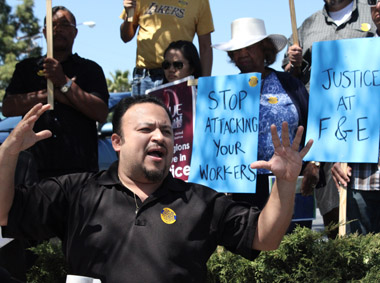 “To me that open door policy is not really in force,” responded Acuna. “I feel like it’s not open to freely say what you want. I feel like whatever you say can be used against you.”
“To me that open door policy is not really in force,” responded Acuna. “I feel like it’s not open to freely say what you want. I feel like whatever you say can be used against you.”
Acuna said employees in the Eagle Rock store chose not to use a secret ballot because they felt the company was maneuvering to make the vote fail. He claimed six employees were brought in from other stores to throw off the pro-union majority.
Carlos Juarez, a 37-year-old Fresh & Easy employee, who also was injured on the job, held up a flier created and distributed by the store to customers. The flyer stated that protesters at a recent rally were not employees of the store.
“And that’s a lie,” said Juarez. “We’re here. This is a decision that we made.”
The two employees said that they just want the store to be a better place to work, but added the pay could also be better. Acuna and Juarez said they make the highest salary for staff members, pulling in $10.90 per hour.
Acuna said the company has been busy opening new stores in Northern California.
“If they have money to do that, then they have money to help their employees,” said Acuna.
Spokesman Brendan Wonnacott said that the company opened 16 stores in 2011. Figures provided by Tesco show the company’s sales in the U.S. were up 38 percent in the third quarter of last year.
As the rally wrapped up, the crowd chanted “Si se puede,” Spanish for “Yes, it can be done.”
Afterward Acuna said his plan is to present to the corporate office a strategy to improve health and safety conditions at the stores.
“We want this company to succeed,” Acuna said. “And the only way they’re going to be able to make that happen is to make their employees happy and theyíre not making that.”









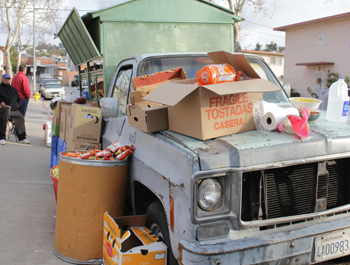
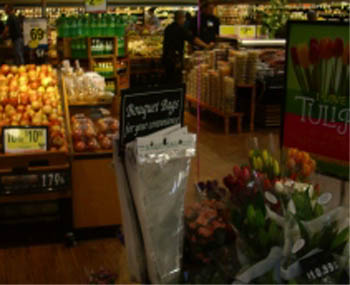 There are two entrances at Ralphs that are very close to each other. One faces Vermont Avenue while the other faces Adams Boulevard. Both entrances have automatic sliding doors that open into the large, colorful, and brightly lit produce section. This picture shows the produce section with its carefully organized retail displays. But the smell of flowers and fruits also pervades this space. Here, you can see a Tulip stand with bouquet bags so that you can arrange flowers yourself. It seems a little strange to do this type of job yourself, but looking around the store and seeing consumers shopping for everything themselves with not so much as a greeting (except sometimes by the security guard who guards the two entrances/exits), a self-service floral kiosk fits right in. The presence of a floral shop and do-it-yourself bouquets adds to the “naturalness” of this section; it almost seems magical. Although there are junk foods dispersed throughout this section, Ralph’s does a pretty good job at separating junk foods from healthy foods. The produce section is Ralph’s most colorful, open, and attractive space in the store…no wonder they force shoppers to enter into this area.
There are two entrances at Ralphs that are very close to each other. One faces Vermont Avenue while the other faces Adams Boulevard. Both entrances have automatic sliding doors that open into the large, colorful, and brightly lit produce section. This picture shows the produce section with its carefully organized retail displays. But the smell of flowers and fruits also pervades this space. Here, you can see a Tulip stand with bouquet bags so that you can arrange flowers yourself. It seems a little strange to do this type of job yourself, but looking around the store and seeing consumers shopping for everything themselves with not so much as a greeting (except sometimes by the security guard who guards the two entrances/exits), a self-service floral kiosk fits right in. The presence of a floral shop and do-it-yourself bouquets adds to the “naturalness” of this section; it almost seems magical. Although there are junk foods dispersed throughout this section, Ralph’s does a pretty good job at separating junk foods from healthy foods. The produce section is Ralph’s most colorful, open, and attractive space in the store…no wonder they force shoppers to enter into this area.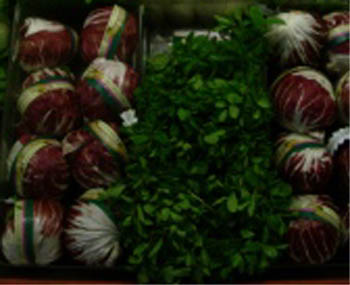 Ralphs had Radicchios for sale at $3.99 per pound. I took a picture because I thought they might be part of the Brassicaceae family; radishes belong in that same family. However, Radicchios are part of the chicory family, which are a slightly bitter-tasting leafy vegetable. Radishes and Radicchios have a similar color, though. Radicchios, at $3.99 per pound, were only found at Ralphs. The radishes there were located right next to the Radicchios. They were looking quite good. There were plastic bags hanging above the vegetables and scales for you to weigh them. At 99 cents a pound, they are a bargain.
Ralphs had Radicchios for sale at $3.99 per pound. I took a picture because I thought they might be part of the Brassicaceae family; radishes belong in that same family. However, Radicchios are part of the chicory family, which are a slightly bitter-tasting leafy vegetable. Radishes and Radicchios have a similar color, though. Radicchios, at $3.99 per pound, were only found at Ralphs. The radishes there were located right next to the Radicchios. They were looking quite good. There were plastic bags hanging above the vegetables and scales for you to weigh them. At 99 cents a pound, they are a bargain. As you can see, the produce section is right next to the chips and soda; the chips are advertised $2 per big bag and the soda is 79 cents. There was a small little stand of flowers, but Superior obviously has less concern for their merchandise image than Ralphs. Never mind maintaining a “natural” atmosphere in their produce section. Superior’s floors were dirty, the fruits and vegetables were mostly kept in their original boxes/crates and the overall quality of the food seemed below average. The residents that go to Superior for their groceries are coerced into buying highly processed junk food for their families, rather than healthy fruits and vegetables. Superior has much better prices for highly saturated foods than Ralphs, but they had similar or worse prices in their produce section. In the case of radishes, Superior did not advertise price by the pound but by the quantity. As we can see below, you can get two radishes for $1–slightly more money than you would spend at Ralphs, because two radishes weigh slightly less than one pound.
As you can see, the produce section is right next to the chips and soda; the chips are advertised $2 per big bag and the soda is 79 cents. There was a small little stand of flowers, but Superior obviously has less concern for their merchandise image than Ralphs. Never mind maintaining a “natural” atmosphere in their produce section. Superior’s floors were dirty, the fruits and vegetables were mostly kept in their original boxes/crates and the overall quality of the food seemed below average. The residents that go to Superior for their groceries are coerced into buying highly processed junk food for their families, rather than healthy fruits and vegetables. Superior has much better prices for highly saturated foods than Ralphs, but they had similar or worse prices in their produce section. In the case of radishes, Superior did not advertise price by the pound but by the quantity. As we can see below, you can get two radishes for $1–slightly more money than you would spend at Ralphs, because two radishes weigh slightly less than one pound.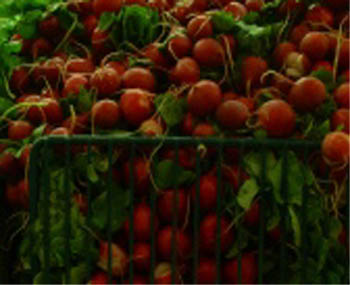 The radishes at Superior looked much dryer and beaten than the ones at Ralphs. I assume that, at Ralphs, there are spritzer machines that give its produce a shiny, almost waxy glow to them. At Superior, however, the fruits/vegetables seemed quite dirty…perhaps the dirt from the fruits/vegetables is what makes the floor so dirty. Although Ralphs pays very careful attention to its smell, lighting and spritzer machines to maintain a “natural” atmosphere, what could be more natural than dirt? It is very strange to see how our sense of “natural” has turned into its exact opposite: artificial. Maybe its the contrived atmosphere of the grocery store spawned from the artificiality of the tastes and smells in our food, or is it the other way around?
The radishes at Superior looked much dryer and beaten than the ones at Ralphs. I assume that, at Ralphs, there are spritzer machines that give its produce a shiny, almost waxy glow to them. At Superior, however, the fruits/vegetables seemed quite dirty…perhaps the dirt from the fruits/vegetables is what makes the floor so dirty. Although Ralphs pays very careful attention to its smell, lighting and spritzer machines to maintain a “natural” atmosphere, what could be more natural than dirt? It is very strange to see how our sense of “natural” has turned into its exact opposite: artificial. Maybe its the contrived atmosphere of the grocery store spawned from the artificiality of the tastes and smells in our food, or is it the other way around?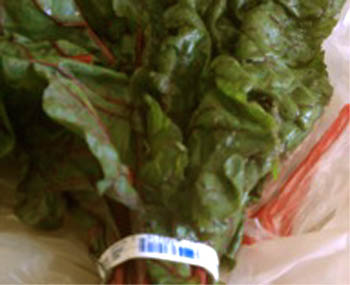
 This week, the United States Department of Agriculture and Department of Health released new dietary guidelines. Updated every five years, the food pyramid taught in classrooms around the nation is a beacon of healthy food choices.
This week, the United States Department of Agriculture and Department of Health released new dietary guidelines. Updated every five years, the food pyramid taught in classrooms around the nation is a beacon of healthy food choices. 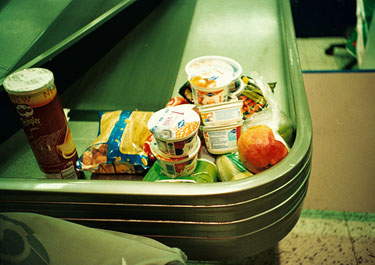 Grocery stores between the two communities had a gap just as wide as restaurants.
Grocery stores between the two communities had a gap just as wide as restaurants.





